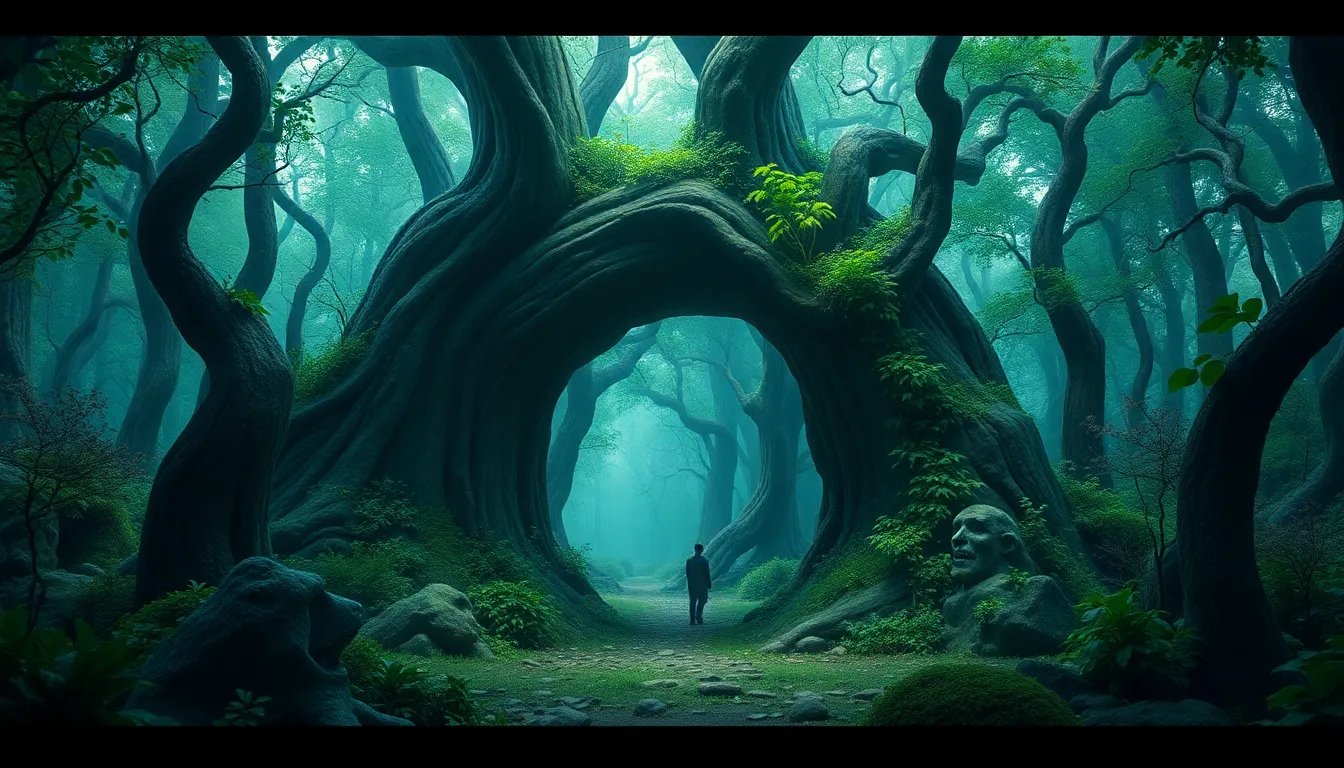The Enchanted Forest: A Tapestry of Myths and Legends
Introduction to the Enchanted Forest
The term “enchanted forest” conjures images of mystical woods filled with magical creatures, ancient trees, and ethereal beauty. An enchanted forest is not merely a physical location but a concept deeply rooted in mythology and storytelling. These forests serve as a backdrop for adventure, danger, and transformation, symbolizing the intersection between the mundane and the magical.
Culturally, forests have long held significance across various mythologies. They are often depicted as places of mystery, where the natural and supernatural converge, embodying the duality of life—growth and decay, beauty and peril. This article explores the rich tapestry of myths surrounding enchanted forests, revealing their historical context, common themes, and cultural relevance.
Historical Context of Enchanted Forests
The origins of the enchanted forest myth can be traced back to ancient civilizations. In many cultures, forests were seen as sacred spaces inhabited by gods and spirits. For instance, the Celts revered woodlands as sacred groves, while the Greeks told stories of nymphs and satyrs dwelling in their forests.
As history evolved, so did the legends associated with forests. The medieval period saw a rise in fairy tales, where enchanted woods became settings for quests and moral lessons. Over time, the enchanted forest became a metaphor for the unknown, representing both fears and aspirations.
Common Themes in Enchanted Forest Myths
Enchanted forest myths share several recurring themes that resonate across cultures:
- Nature as a character: Forests are often personified, acting as sentient beings that influence the fate of those who enter.
- The duality of enchantment: These woods embody both beauty and danger, enticing adventurers while hiding perils.
- Transformation and metamorphosis: Characters often undergo significant changes, signifying personal growth or the consequences of their actions.
Famous Enchanted Forests Around the World
Numerous enchanted forests exist globally, each with its own unique folklore:
- The Black Forest, Germany: This iconic forest is steeped in folklore, featuring tales of goblins, witches, and fairy tales like those collected by the Brothers Grimm.
- The Forest of Dean, England: Known for its ghost stories and legends, this ancient woodland is said to be haunted by the spirits of lost souls.
- The Amazon Rainforest: Home to countless indigenous myths, the Amazon is not only ecologically significant but also a reservoir of spiritual beliefs and stories.
Mythical Creatures of the Enchanted Forest
Enchanted forests are often populated by mythical beings that embody the spirit of the woods:
- Fairies, elves, and sprites: These beings are often depicted as guardians of nature, with origins tracing back to ancient folklore.
- Forest guardians: Creatures like centaurs and dryads serve as protectors of the natural world, symbolizing the harmony between humanity and nature.
- The role of animals: Many myths feature animals as shapeshifters or familiars, guiding or challenging human characters.
Enchanted Forest in Literature and Art
Enchanted forests have inspired countless literary works and artistic representations:
- Classic literature: Works such as “A Midsummer Night’s Dream” by Shakespeare and “The Chronicles of Narnia” by C.S. Lewis feature enchanted woods that serve as vital settings for character development and plot progression.
- Visual arts: Artists like Caspar David Friedrich and Gustav Klimt have captured the beauty and mystique of forests in their paintings, portraying them as realms of wonder and introspection.
- Modern adaptations: Films like “Into the Woods” and animated features such as “Frozen” showcase enchanted forests, blending traditional motifs with contemporary storytelling.
The Psychological and Spiritual Aspects of Enchantment
The significance of enchanted forests extends beyond mere storytelling; they serve as powerful metaphors for the human psyche:
- The forest as a metaphor: Enchanted woods often symbolize the subconscious, representing the unknown depths of our minds.
- Therapeutic effects: Nature has proven therapeutic effects, and the magical realism of enchanted forests encourages a sense of wonder and exploration.
- Spiritual journeys: Many tales involve quests through enchanted settings, reflecting personal growth and the search for meaning.
Local Legends and Folklore: Regional Variations
Enchanted forest myths vary widely across cultures, influenced by geography and local beliefs:
For example, Wistman’s Wood in Devon, England, is steeped in local legends of ghostly apparitions and ancient rituals. Similarly, the tales surrounding the Amanita muscaria mushroom in Siberian folklore illustrate how geography shapes these stories.
The Enchanted Forest in Modern Culture
Today, enchanted forests continue to inspire various aspects of modern culture:
- Fantasy genres: The rise of fantasy literature and media often draws on enchanted forest themes, emphasizing magic, adventure, and the struggle between good and evil.
- Festivals and experiences: Many regions celebrate their enchanted forests through festivals, tours, and immersive experiences that connect people with nature.
- Environmental movements: Forest legends often inspire conservation efforts, reminding us of the importance of preserving these magical ecosystems.
Conclusion: The Enduring Allure of the Enchanted Forest
Enchanted forests remain a significant part of our cultural consciousness, symbolizing the interplay between reality and myth. They remind us of the magic inherent in nature and the stories that shape our understanding of the world. As we navigate the complexities of contemporary society, the relevance of these myths persists, urging us to explore, protect, and cherish the enchanting landscapes around us.
Ultimately, the allure of enchanted forests lies in their ability to inspire wonder and contemplation, inviting us to venture into the unknown and discover the magic that awaits within.



